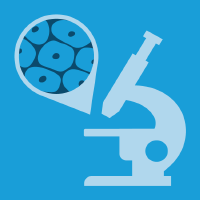Topic Menu
► Topic MenuTopic Editors

2. Biomedical Research Networking Center in Respiratory Diseases (CIBERES), Madrid, Spain


Pulmonary Fibrosis and Cell Therapy
Topic Information
Dear Colleagues,
During these last two decades, cell therapies for the treatment of pulmonary fibrosis have been considered a promising treatment. In that time, different types of stem cells or lung progenitor cells have been evaluated, mostly in animal models and only in a few human clinical trials. However, although both preclinical and human clinical data support the safety of cell therapies, they have not been translated into routine clinical practice. The reasons are diverse, since many key unanswered questions remain, such as doubts about the type of cells to be transplanted, the origin of these cells (autologous or heterologous), the route of administration (intravenous or endotracheal), the dose, the best time for transplantation, and others. Additionally, the concern about side effects, such as unwanted differentiation of the grafted stem cells, cannot be ignored. In addition to answering these questions, it is essential to know the mechanisms by which cell therapies exert their positive effects. Recent studies indicate that most positive effects can be attributed to the cellular secretome, composed of free soluble proteins and extracellular vesicles. The use of the secretome would avoid the side effects associated with cells, as well as the difficulty in obtaining and expanding them. Therefore, it is not only important to answer these questions, but also to know the mechanisms by which cell therapies exert their positive effects. All of this knowledge would help to consolidate cell therapies in clinical practice. This Topic aims to summarize the updated knowledge on different cell therapies and the mechanisms involved in their potential therapeutic effect in pulmonary fibrosis. The Topic, entitled “Pulmonary Fibrosis and Cell Therapy”, will include both review and original research papers covering key topics related to different cell therapies for pulmonary fibrosis, such as:
(1) different types of stem cells, induced pluripotent stem cells (iPSC), non-derived and derived from pulmonary cells;
(2) lung progenitor cells;
(3) other type of pulmonary cells;
(4) the cell secretome;
(5) cell–cell interactions;
(6) investigation of mechanisms of lung tissue regeneration, cell engraftment, or the cell secretome.
We hope that our readers from various disciplines will benefit from this Topic, which will serve as a gateway to the amazing world of cell therapies for fibrotic diseases. We look forward to your contributions.
Dr. Victor Ivo Peinado
Dr. Anna Serrano-Mollar
Dr. Olga Tura-Ceide
Topic Editors
Participating Journals
| Journal Name | Impact Factor | CiteScore | Launched Year | First Decision (median) | APC |
|---|---|---|---|---|---|

Biomolecules
|
5.5 | 8.3 | 2011 | 16.9 Days | CHF 2700 |

Cells
|
6.0 | 9.0 | 2012 | 16.6 Days | CHF 2700 |

International Journal of Molecular Sciences
|
5.6 | 7.8 | 2000 | 16.3 Days | CHF 2900 |

Journal of Molecular Pathology
|
- | - | 2020 | 24.9 Days | CHF 1000 |

Organoids
|
- | - | 2022 | 15.0 days * | CHF 1000 |
* Median value for all MDPI journals in the second half of 2023.

MDPI Topics is cooperating with Preprints.org and has built a direct connection between MDPI journals and Preprints.org. Authors are encouraged to enjoy the benefits by posting a preprint at Preprints.org prior to publication:
- Immediately share your ideas ahead of publication and establish your research priority;
- Protect your idea from being stolen with this time-stamped preprint article;
- Enhance the exposure and impact of your research;
- Receive feedback from your peers in advance;
- Have it indexed in Web of Science (Preprint Citation Index), Google Scholar, Crossref, SHARE, PrePubMed, Scilit and Europe PMC.

